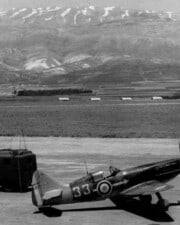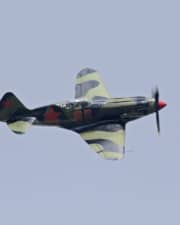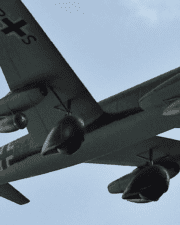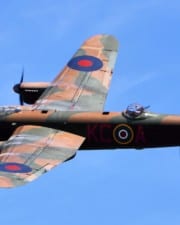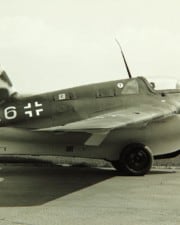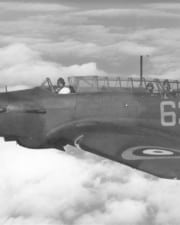If there is one thing that stood out in World War II, it was the fighter jets and bomber planes that were constantly being developed to outdo the power of the enemies’ planes. The Japanese bombers were undoubtedly some of the best, in part because they had technologically advanced companies such as Mitsubishi and Nakajima working for them to develop those planes.
Table of Contents
The Japanese developed a total of 48 fighter plane models from the mid-1930s until the end of the war in 1945. World War II wasn’t just the world at war; it was also a race to see which country could come up with the most advanced bomber possible so that the Allies could win the war. In fact, there were tons of advances discovered during this ten-year time period, which no doubt helped the Allies win the war in the end.
If you were to ask a group of people what the best Japanese bombers were during World War II, you’d get a variety of answers, but one thing is certain: you’ll always see names such as Mitsubishi, Kawasaki, Yokosuka, Nakajima, and Aichi on the list, as well as others. While the war didn’t end as the Japanese hoped it would, that cannot change the fact that they had some incredible flying machines in the air the entire time.
The Japanese bombers were divided into various types during the war and included dive bombers, torpedo bombers, and light, medium, and heavy bombers. Different bombers had different roles, and these included duties such as:
- Air-to-air combat
- Close air support (CAS)
- Intelligence, surveillance, and reconnaissance (ISR)
- VIP services
- Training
- Ground attacks, which usually included bombing and strafing
- Maritime/Navy duties
- Patrol
- Special missions, of which there were various kinds
Some planes used by the Japanese actually had non-combat roles as well, but the planes listed below are all bomber planes that had definitive combat roles. Regardless of how interested you are in World War II, the following information will help you learn even more about this iconic war.
Below are 17 of the most important Japanese bombers that were used during World War II and some interesting information about each of them.
I. Japanese Dive Bombers
1. Aichi D3A Type 99 Carrier Bomber
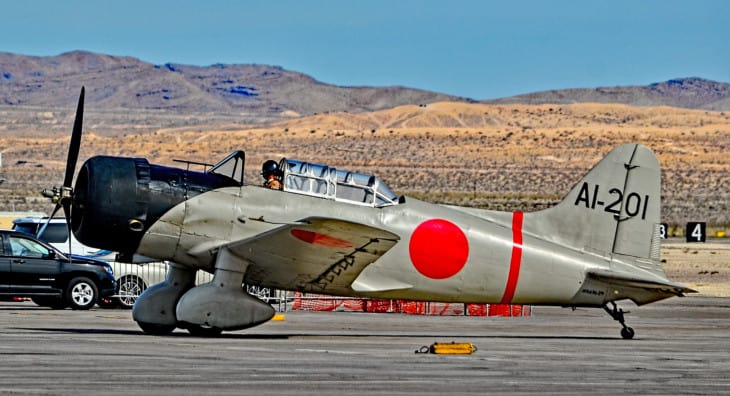
Nicknamed Val, this plane was practically obsolete at the start of World War II — that is, until it took part in the attack on Pearl Harbor in December of 1941. Its main duties included ground attacks and maritime/Navy duties, and it accommodated a crew of two people.
The Aichi D3A plane had eight different variants made and could fly at up to 267 MPH. It could incline at 1640 feet per minute, and there were a total of 1495 units made of the plane. While almost obsolete in late 1941, the D3A carrier bomber had only been around since 1940.
The plane also had a 1000 HP Mitsubishi Kinsei 43 engine and had a ceiling of just under 34,500 feet. Though no longer used, this plane will always be known as one of the planes that attacked Pearl Harbor and brought the United States into World War II.
2. Aichi B7A Ryusei (also a torpedo bomber)
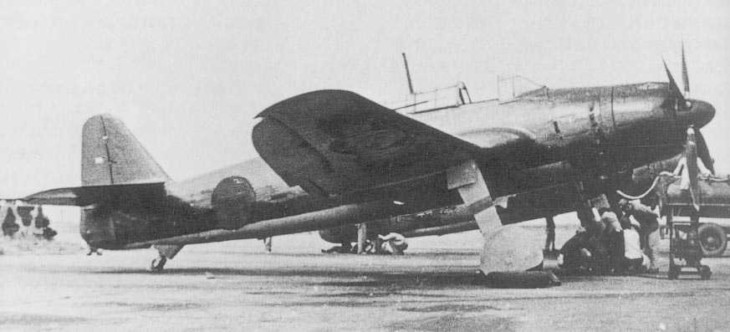
Introduced in 1944, the Aichi B7A Ryusei, nicknamed the Grace, was a two-seater plane used mostly for ground attacks. It had a four-blade propeller and could fly at a speed of 351 MPH. Only six variants of the plane were ever made, as well as 114 units total.
The plane served as both a carrier-borne torpedo bomber and a dive bomber, and it could incline at 1890 feet per minute. Its ceiling was a whopping 36,909 feet, and it was a plane that was used quite a bit during World War II.
It also had a wingspan of a little more than 47 feet. The plane looked small to some people, but at 351 MPH, this was a fast plane that did what it was built to do.
3. Aichi M6A Seiran (also a torpedo bomber)
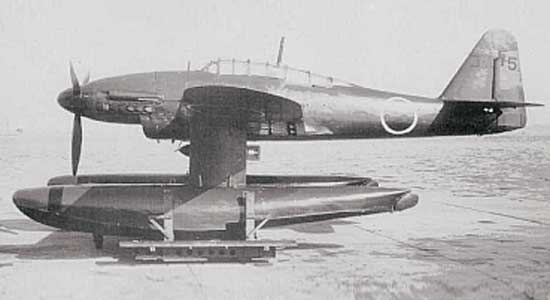
The Mountain Haze, as this plane was nicknamed, was a submarine-based attack floatplane that participated in ground attacks, special missions, and intelligence, surveillance, and reconnaissance (ISR). It flew at a speed of 295 MPH and was specifically made to launch submarines.
One of its most unique features was the wings’ ability to rotate and lay on the sides of the fuselage. This made it a very versatile plane that accommodated its many duties well. It had a 1400 HP engine and was designed to accommodate a crew of two.
There were four different variants of the plane, which had an incline of 1640 feet per minute. Only 28 units of the plane were ever made.
4. Kawasaki Ki-32

The Kawasaki Ki-32 airplane, nicknamed the Mary, was a single-engine, two-seater plane that was used most for ground attacks, particularly bombing and strafing. It flew at a speed of 264 MPH and could climb at 1500 feet per minute.
The Mary had a three-blade propeller and used an 850 HP engine. The plane was 9.5 feet tall and had an impressive wingspan of 49.2 feet. There were only two variants made of this plane, and only 854 units were ever manufactured.
With a ceiling of 29,281 feet, this plane could perfectly position itself for the jobs it was meant to do and most of its usefulness was experienced during the early years of the war.
5. Mitsubishi Ki-51 2385
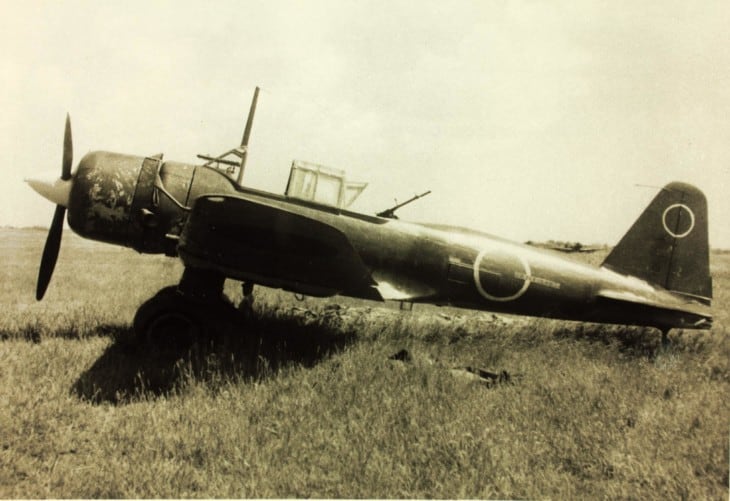
Nicknamed the Sonia, the Mitsubishi Ki-51 plane was used mostly for ground attacks, reconnaissance, and for kamikaze attacks at the end of the war. It was also used for close-air support (CAS) and intelligence, surveillance, and reconnaissance (ISR).
Only 2385 units of the plane were ever made, but it was the perfect size at nine feet tall and 39.7 feet wide at the wingspan. It flew at a speed of 264 MPH and was a monoplane that accommodated a crew of two people. It also had a climb rate of 1640 feet per minute.
There were three variants of this plane, which saw most of its action in places such as Burma and China.
6. Yokosuka D4Y Suisei

Nicknamed the Judy and the Comet, this plane first came on the scene in the latter part of 1942, making it a great addition to the bulk of the war effort. While at one point it suffered heavy losses, it was still a very successful carrier-borne dive bomber whose duties also included ground attacks and maritime/Navy duties.
The Suisei could fly at a speed of 356 MPH and had a climb rate of 2163 feet per minute. There were five variants of the plane, which stood at an impressive 12.3 feet tall. It was a great performer overall and had a single engine and room for a crew of two.
A little more than 2000 of these planes were produced throughout World War II, even though the plane is now retired. It utilized a Mitsubishi engine and had a wingspan of 39.7 feet.
II. Japanese Medium Bombers
7. Mitsubishi G3M (also a torpedo bomber)
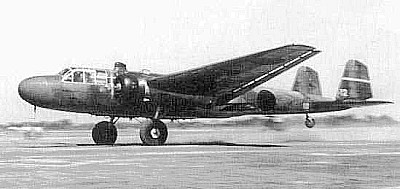
The Mitsubishi G3M got its start in 1936 and was nicknamed Nell. It traveled at a speed of 232 MPH and was able to climb at 1180 feet per minute. It had an 82-foot wingspan and stood at 12.1 feet high. It was used not only by the Imperial Japanese military but also by Indonesia.
The Nell was a two-engine plane that could accommodate crews of either five or seven members. Only 1048 units of the plane were ever developed, and its main duties included VIP transportation, training, patrol, maritime, and others.
There were a total of nine variants of this airplane, but it was eventually replaced by the Mitsubishi G4M medium bomber.
8. Mitsubishi G4M

The Mitsubishi G4M replaced the G3M and was nicknamed the Betty. Its claim to fame is the fact that it was this type of plane that killed Japanese Admiral Yamamoto in 1943. Yamamoto, who was the main mastermind of the attack on Pearl Harbor, was killed by an American P-38 plane that year.
The Betty was a Navy land-based plane with a sleek look and duties such as ground attacks and maritime/Navy duties. It had an 82-foot wingspan and a height of just over 16 feet. It also flew at a speed of 267 MPH.
There were nine variants of this plane, and it boasted a climbing speed of 1800 feet per minute. It was a twin-engine plane with a very well thought-out design and accommodations for a crew of two.
9. Mitsubishi Ki-21
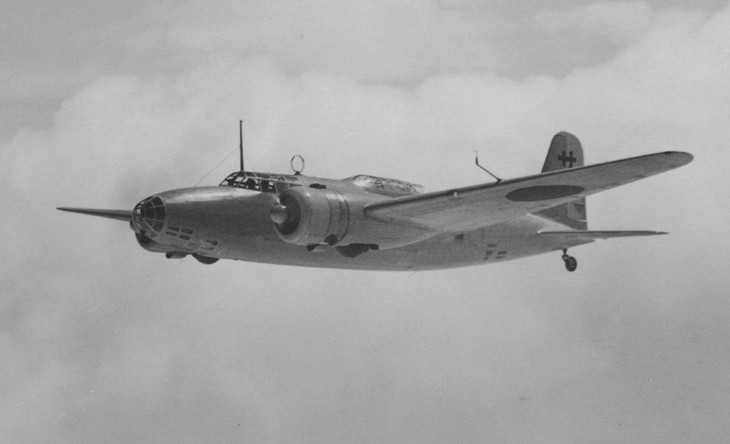
This plane, nicknamed the Sally, had as its main duties ground attacks, mostly bombing and strafing. It was a twin-engine five-seater airplane that had a wingspan of 73.8 feet and a height of nearly 16 feet. Production of the plane started in 1939 and continued to the end of the war, even though it was used less and less by that point.
The Sally ended the war mostly by providing suicide kamikaze attacks and had a climb rate of 1499 feet per minute. There were 2064 units of the plane manufactured but they were all but obsolete by the end of the war. There were also 13 variants of the plane during its lifetime.
10. Mitsubishi Ki-67
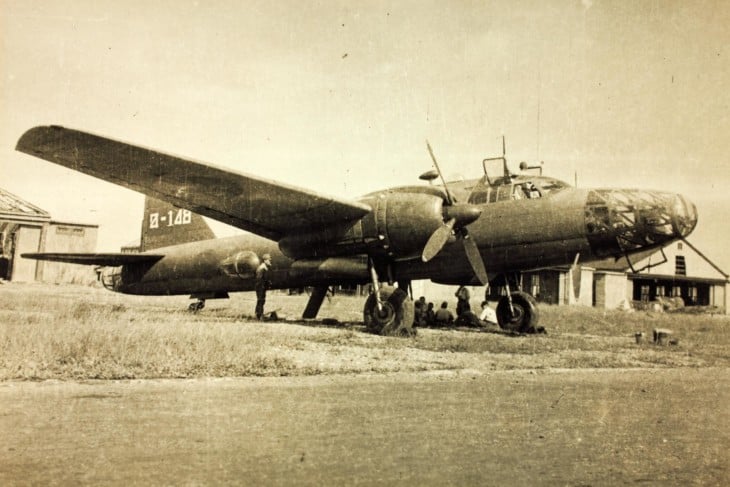
Nicknamed the Peggy, this plane got its start in 1944 and was classified by the Japanese as a medium bomber, although by Western standards it was considered a light bomber. It could fly at a speed of 334 MPH and had a climb rate of 1357 feet per minute.
The Peggy was a two-engine plane that could accommodate a crew of six to eight people. It had a wingspan of 73.8 feet and was more than 25 feet high. There were 14 different variants of the airplane, and its main duties were ground attacks, mostly bombing and strafing.
Many experts believe that the Peggy was one of the best Japanese bombers of World War II. It could carry thousands of pounds of bombs or a single torpedo more than 1700 miles. A total of 767 units of the plane were eventually manufactured.
11. Nakajima Ki-49
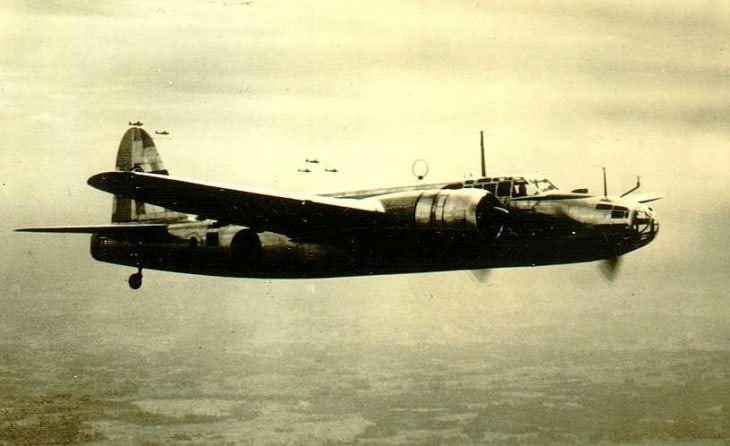
The Nakajima Ki-49 was supposed to replace the Ki-21, which wasn’t designed very well and had its share of flaws. The problem was that the Ki-49 was not a whole lot better. This is likely why only 819 units of the plane were ever manufactured.
The Ki-49 was nicknamed the Helen but the name translated into the Storm Dragon. There were nine different variants of the plane, which had as its main duty ground attacks, mostly bombing and strafing. It flew at a speed of 306 MPH and had a climb rate of 1225 feet per minute.
The Ki-49 also had a 67-foot wingspan and was nearly 14 feet high. It accommodated seven crew members and was used by the military in Japan and Indonesia.
12. Yokosuka P1Y (also a torpedo bomber)

Nicknamed the Frances, this bomber’s main duties were air-to-air combat, ground attacks (mostly bombing and strafing), and special anti-ship missions. There were 19 variants of the plane, and it was made to accommodate one cannon and one machine gun.
The Frances, a twin-engine three-seater, did not make as much of an impact on the war as people thought it would in the beginning. There were roughly 1102 units of the plane manufactured, and it had a height of 14.1 feet and a wingspan of 65.6 feet.
The plane also flew at a speed of 342 MPH and had a ceiling of 30,840 feet. Though not one of the most significant Japanese bombers during World War II, it was nonetheless a strong performer in many ways.
III. Japanese Torpedo Bombers
12. Nakajima B5N
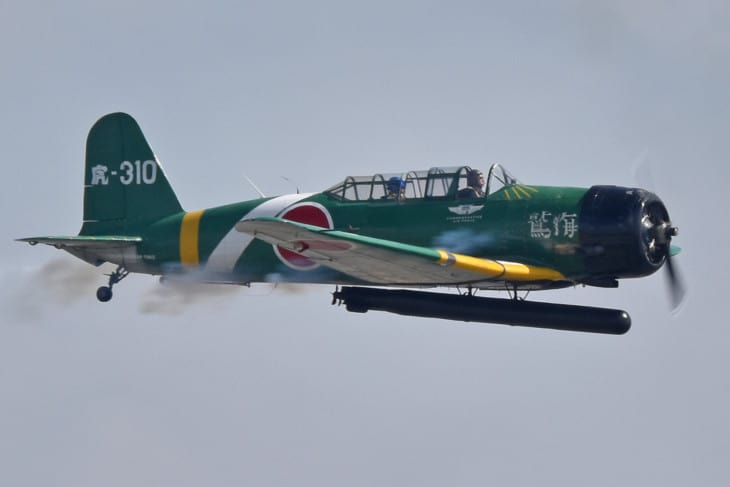
Nicknamed the Kate, the B5N plane was considered by many to be the best carrier-borne torpedo bomber in the world at the time World War II was taking place. The plane even had a role in the bombing of Pearl Harbor in December of 1941.
The Kate had a wingspan of 50.9 feet and a height of 12.1 feet. It could fly at a speed of 236 MPH and could accommodate a crew of three people. There were five different variants of the plane, and it had a climb rate of 1230 feet per minute.
The plane’s main duties included ground attacks, maritime/Navy duties, and training. There were only 1149 units of the plane ever manufactured.
13. Nakajima B6N
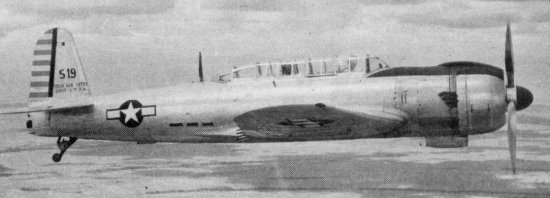
The B6N was the next step up for the B5N torpedo bomber. It was nicknamed the Jill and was considered a very advanced bomber for that timeframe. Its duties included ground attacks and maritime/Navy duties. It had a flying speed of 299 MPH and a climb rate of 1577 feet per minute.
The Jill had a wingspan of 48.9 feet and was 12.5 feet in height. It accommodated a crew of three and had four different variants made. There were only 1266 units made of this bomber, but it still had an important role to play in the Second World War.
IV. Japanese Light Bombers
14. Mitsubishi Ki-30

The Mitsubishi Ki-30 bomber was nicknamed the Ann and was used not only by Japan but also by Thailand and Indonesia. It enjoyed early success against China but became less significant as the war raged on. It flew at a speed of 263 MPH and had a climb rate of 1643 feet per minute.
The Ann participated in tasks such as training, ground attacks (mostly bombing and strafing), and intelligence, surveillance, and reconnaissance (ISR). There were only a total of 704 units of the plane made and it accommodated a crew of two people.
The Ki-30 had an impressive wingspan of 47.7 feet and was 12 feet high.
15. Kawasaki Ki-48
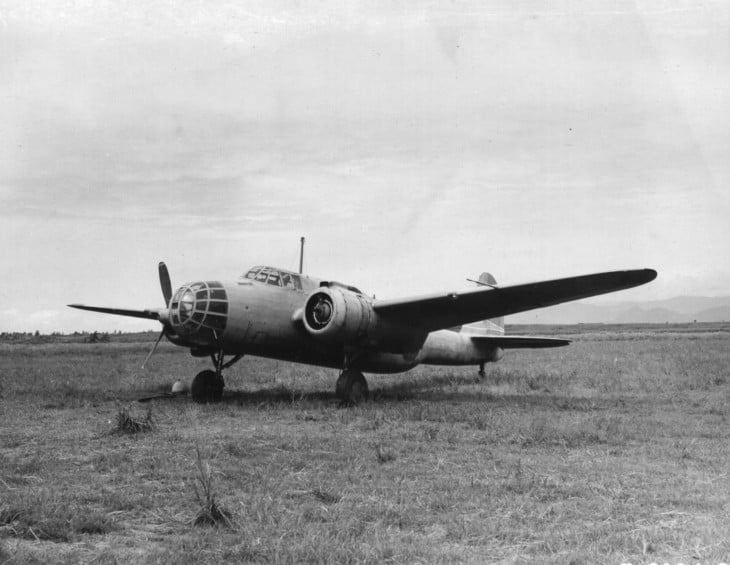
Nicknamed the Lily, the Ki-48 was a fast bomber and a dive bomber and was inspired by the Russian SB-2 series of bombers. It accommodated a crew of four people and participated mostly in ground attacks, which included bombing and strafing.
The Lily flew at a speed of 314 MPH and had only 1997 units of the plane manufactured by the time that World War II ended. It had a wingspan of 57.3 feet and a height of 12.5 feet. There were only 10 variants of the plane ever manufactured.
16. Mitsubishi G3M

The G3M plane was nicknamed the Nell and was a twin-engine plane that accommodated a crew of either five or seven people. What makes this plane unique is that it was used in both combat and non-combat roles during the war.
The Nell had a wingspan of 82 feet and was 12.1 feet in height. It flew at a speed of 232 MPH and had a climb rate of 1180 feet per minute. Only 1048 units of the plane were ever manufactured, and it was used for ground attacks, transportation, VIP services, special missions, training, and intelligence, surveillance, and reconnaissance (ISR).
Related Posts


